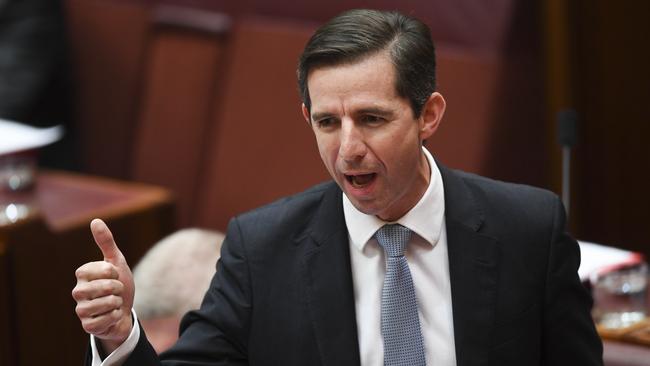Serial students rack up enough debt to buy apartments
The Education Minister says some students are racking up unnecessary loans that are all funded by taxpayers.

Some “serial” students doing multiple courses at university have built up enough student loan debt to pay for an apartment, according to federal Education Minister Simon Birmingham.
As the government prepares to introduce legislation to the Senate to cap student loans under the higher education loan program, Senator Birmingham said excessive loans needed to be reined in. “It’s clear some students are racking up unnecessary loans that are all funded by taxpayers,” he said.
The data from Senator Birmingham’s department shows that one person in NSW has HELP debt worth $536,000, another in Victoria has $459,000 worth of debt and a Canberra resident owes $445,000.
There is no limit on borrowing under HECS-HELP loans which the government offers for all bachelor degrees and some masters degrees.
Most subsidised degree courses cost students less than $10,000 a year — and even medicine, dentistry and veterinary science courses are only $10,596 a year — which means a student has to enrol in multiple courses to reach several hundred thousand dollars’ worth of debt.
Even if students have used the FEE-HELP scheme to borrow for more expensive full-fee courses, these have debt limits which restrict how much students can borrow, so can’t alone account for some students’ large debts.
Currently students with FEE-HELP have a borrowing limit of $100,879 unless they are studying a full-fee course in medicine, dentistry or veterinary science for which the borrowing limit is $126,101.
In total, more than 14,000 people have HELP debts of more than $100,000 and their debt totals $1.7 billion.
But the department’s public data does not distinguish between different types of HELP debt owed by the students. Some of it could be VET FEE-HELP debt accrued under the discredited, now-closed loan scheme, in which some students were conned into enrolling in multiple courses they were never likely to complete, so that dodgy colleges could collect the course fees from the government.
The legislation being put to the Senate will put a limit on total debt for each student of $104,440, with a higher debt level of $150,000 for students studying medicine, dentistry and veterinary science courses.
Originally this was intended to be a lifetime limit but, following a revolt by three Liberal senators in March, Senator Birmingham agreed to make the debt limit replenishable, meaning students can borrow multiple times as long as they have paid off enough debt to remain below the limit.
The bill is opposed by Labor and the Greens, so passage will depend on support from the crossbench.
It also introduces a lower income threshold for repayment of all HELP loans, meaning borrowers will begin repaying (at a rate of 1 per cent of income) once their annual income reaches $45,000, instead of the present $55,874.
The bill also reduces the likely future increases in the income threshold by indexing it to the generally lower consumer price index instead of average weekly earnings.
Both measures will help rein in the rising cost to the government of HELP loans.




To join the conversation, please log in. Don't have an account? Register
Join the conversation, you are commenting as Logout